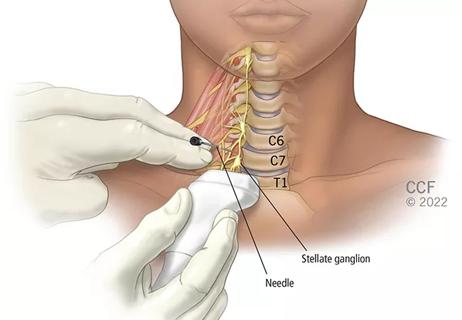Study sheds light on how clinicians addressed their patients’ pain and insomnia during the pandemic

Millions of Americans rely on sleep medications to treat insomnia, a common clinical problem that is often managed pharmacologically. In 2020 alone, an estimated 18.4% of American adults reported using a sleep medication at least once in the past month.1 In what is believed to be the first study of its kind, Cleveland Clinic investigators sought to evaluate how the COVID-19 pandemic influenced providers’ decisions to prescribe nonbenzodiazepine sedative-hypnotics or “Z-drugs” (e.g., Ambien, Lunesta) both with and without opioid coprescriptions.
Advertisement
Cleveland Clinic is a non-profit academic medical center. Advertising on our site helps support our mission. We do not endorse non-Cleveland Clinic products or services. Policy
Led by psychiatrist Akhil Anand, MD, researchers reviewed data from more than 1 million adult patients in 2019 (pre-pandemic) and 2020 (post-lockdown) to better understand how clinicians used Z-drugs and opioids to address the complex relationship between insomnia and pain. Their findings were recently published in the Journal of Clinical Psychiatry.
“Anxiety and stress were particularly common complaints during the COVID-19 pandemic – both of which can compromise the quality of an individual’s sleep,” explains Anand, an addiction specialist at Lutheran Hospital. “We were interested in learning if the pressures of the pandemic had affected the frequency with which providers were prescribing sleep medications – specifically Z-drugs – to help manage those issues. Importantly, we also wanted to understand how and when Z-drugs were being coprescribed with opioids – a practice that can pose lethal risks.”
Although Z-drugs were initially marketed in the U.S. as relatively benign alternatives to benzodiazepines for the treatment of insomnia, their safety has been called into question in recent years. Multiple studies have pointed to significant adverse effects, particularly in older adults, including addiction, bradypnea, dependence, dizziness, cortical dysfunction, disruptive sleep-related disorders (parasomnias, sleepwalking, and sleep-driving), euphoria, falls, overdose, and withdrawal.
Compounding the danger, Z-drugs are frequently coprescribed with opioids to address pain and subsequent sleep disturbances – an issue that raises additional safety concerns given the increased risk of lethal respiratory depression posed by the drug combination. (Notably, new-onset pain is associated with COVID-19 infections, and the emotional distress inflicted by the pandemic may have exacerbated chronic pain for some patients.)
Advertisement
Between January 1, 2019, and December 31, 2020, 455,537 adult patients had 1,643,473 primary care visits (847,655 visits in 2019; 795,818 visits in 2020). Approximately 1.48% of the patients evaluated in the retrospective, cross-sectional study were prescribed a Z-drug in 2019 or 2020, but there was no significant difference in the odds of being prescribed a Z-drug pre- or post-lockdown (OR = 0.978, 95% CI = 0.942–1.010, P = .233). The ratio of prescriptions to primary care visits was 13,193/1,643,473 (0.80%) during the study period (7,022/847,655 [0.83%] in 2019; 6,171/795,818 [0.78%] in 2020).
Of the entire patient sample, 0.2% were coprescribed a Z-drug and an opioid at least once during the study period. Although the rate of opioid coprescribing was relatively high in patients receiving Z-drugs (15.78%), the number of coprescriptions actually decreased post-lockdown. Of concern, however, the data showed that older patients and those with opioid use disorders – the two groups most vulnerable to the adverse effects of these medications – were more likely to receive a Z-drug prescription (both with and without opioids). Zolpidem was the most commonly prescribed Z-drug (87.35%).
Notably, researchers also identified several racial differences in clinical prescribing patterns. Both pre- and post-lockdown, non-white patients were disproportionately less likely to receive Z-drugs than white, affluent patients. Advanced age and certain diagnoses also increased the likelihood of Z-drug use, including alcohol use disorder, bipolar disorder, cocaine/stimulant use disorder, generalized anxiety disorder, sedative/hypnotic use disorder, major depressive disorder, opioid use disorder, other psychoactive use disorder, panic disorder, posttraumatic stress disorder, and insomnia.
Advertisement
“We were pleased to see that Z-drug prescribing didn’t spike in response to the pandemic, but we were quite surprised to find that coprescribing with opioids is still being done with such frequency,” Anand says. “My hope is that our research will prompt new questions and lead to more thoughtful prescribing of Z-drugs. It’s critical for clinicians to understand the potency of these medications and how quickly patients can become dependent on them.”
Anand recommends prescribing Z-drugs as a last resort and only after other nonpharmacological remedies have been trialed. “Cognitive behavioral therapy is well worth exploring and still the most effective method for managing insomnia,” says Anand, who also encourages patients to consider melatonin supplements, meditation, and chamomile tea (a mild sedative that can improve sleep).
Perhaps most importantly, he cautions against prescribing Z-drugs to those taking opioids. “It’s a potentially deadly combination that should be avoided at all costs, particularly in older adults,” he adds. “If both medications are prescribed, the patient should be tightly monitored and tapered off the regimen after the shortest possible duration.”
Advertisement
Advertisement

Dynamic modeling improves the accuracy of outcome predictions for ICU patients

A review of IDSA and NIH guidelines

Patients report improved sense of smell and taste

Clinicians who are accustomed to uncertainty can do well by patients

Unique skin changes can occur after infection or vaccine

Will enable patients with long COVID to enroll in national clinical trials

Cleveland Clinic analysis suggests that obtaining care for the virus might reveal a previously undiagnosed condition

Team collaborates to explore effects of genetic mutations to proteins OAS and RNase L